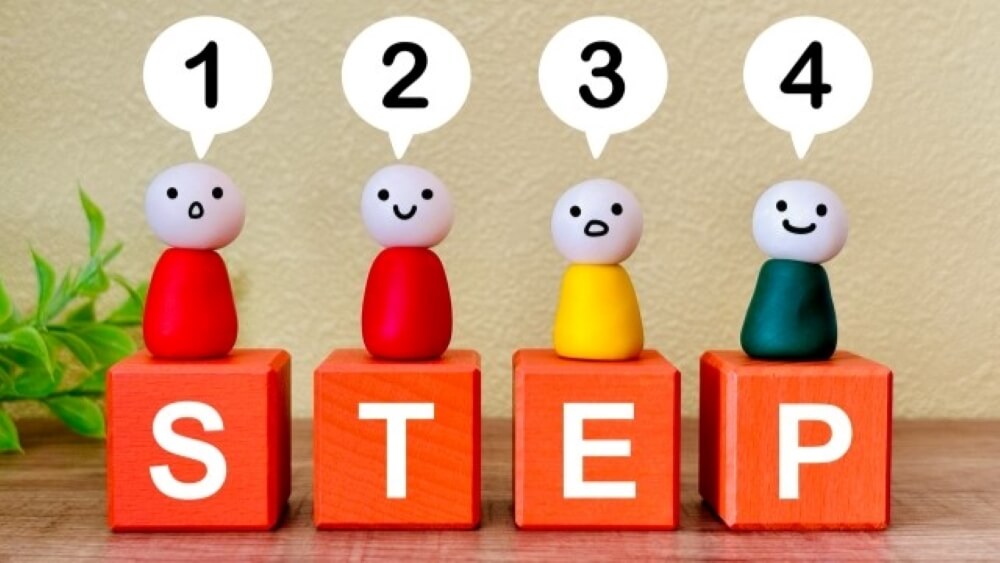Memorising some simple and useful Japanese phrases is a great starting point for those learning Japanese for the first time. While these phrases won’t enable you to hold a full conversation, they are commonly used in Japan. Before tackling complicated grammar, difficult vocabulary, or kanji study, simply memorise these phrases.
Basic Japanese phrases and greetings
Greetings

こんにちは。(Konnichiwa.) – Hello.
This is a general greeting used throughout the day.
おはようございます。(Ohayou gozaimasu.) – Good morning.
This is typically a morning greeting, but in certain contexts such as at work or during club activities, it may also be used in the afternoon when meeting someone for the first time that day. The casual version of this greeting is “おはよう” (ohayou).
こんばんは。(Konbanwa.) – Good evening.
This is a polite greeting used from the time when the sun sets.
おやすみなさい。(Oyasumi nasai.) – Good night.
This is used when saying goodbye or before going to bed. The casual version of this greeting is “おやすみ” (oyasumi).
元気ですか?(Genki desu ka?) – How are you?
The casual version of this greeting is “元気?” (genki?).
はじめまして。(Hajimemashite.) – Nice to meet you.
さようなら。(Sayounara.) – Good bye.
The casual version of this greeting is “バイバイ” (Bye-bye), or we simply say “good night,” “see you,” or something like that, similar to conversations in English.
頂きます。(Itadakimasu.) – Let’s eat.
In Japan, it’s considered good manners to say this phrase before starting a meal.
ごちそうさまでした。(Gochisousama deshita.) – Thank you for the meal.
Just like saying “Itadakimasu,” it’s considered good manners in Japan to say this phrase after finishing a meal. The casual version of this greeting is “ごちそうさま” (gochisousama).
ただいま。(Tadaima.) – I’m back
This is a phrase is used to announce one’s return, often used when entering a house or returning to a group after an absence.
おかえりなさい。(Okaeri nasai) ‐ Welcome back
This phrase is used when someone returns home in response to “Tadaima“. The casual version of this greeting is “おかえり” (okaeri).
Questions and Answers

はい。(Hai) – Yes.
The casual way to say this is “うん” (un).
いいえ。(Iie.) – No.
The casual way to say this is “ううん” (uun).
すみません。(Sumimasen.) – Excuse me.
This can be used when apologizing or getting someone’s attention.
大丈夫ですか?(Daijoubu desu ka?) – Are you okay?
The casual way to say this is “大丈夫?” (Daijoubu?)
どこですか?(Doko desu ka?) – Where is it?
The casual way to say this is “どこ?” (Doko?)
何ですか?(Nan desu ka?) – What is it?
The casual way to say this is “何?” (Nani?)
いつですか?(Itsu desu ka?) – When is it?
The casual way to say this is “いつ?” (Itsu?)
いくらですか?(Ikura desu ka?) – How much is it?
The casual way to say this is “いくら?” (Ikura?)
わかりました。(Wakarimashita.) – I understand.
The casual way to say this is “分かった。” (Wakatta). When negating, say “分かりません” (Wakarimasen).
どうぞ。(Douzo.) – Go ahead./ Here you go.
This is a polite way to offer something or give permission. The casual way to say this is “いいよ” (Ii yo).
Expressing Feelings

ごめんなさい。(Gomen nasai.) – I’m sorry.
This is used only when apologising and not when calling someone. The casual way to say this is “ごめん” (gomen).
ありがとうございます。(Arigatou gozaimasu.) – Thank you very much.
The casual way to say this is “ありがとう” (arigatou).
どういたしまして。(Dou itashimashite.) – You’re welcome.
おめでとうございます!(Omedetou gozaimasu!) – Congratulations!
The casual way to say this is “おめでとう” (omedetou).
お疲れ様です。(Otsukare-sama desu.) – Good job / Well done.
This phrase is used when finishing a difficult task or when leaving work. The casual way to say this is “お疲れ” (otsukare).
Making Requests

お願いします。(Onegaishimasu.) – Please.
This is used when you want someone to do something for you.
下さい。(Kudasai.) – Please.
This is used when you want something, often followed by the desired item.
By mastering these 28 basic Japanese phrases and greetings, you’ll be ready to kick off your Japanese learning journey. Feel free to download audio files support your practice.
If you want to take the next step, check out “Effective Japanese learning: 13 steps From Beginner to Pre-intermediate“. Enjoy your Japanese learning journey!


